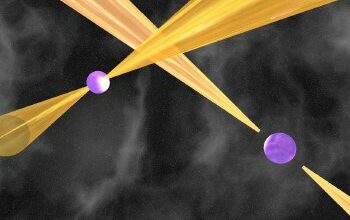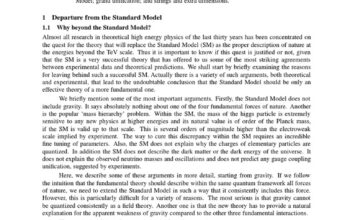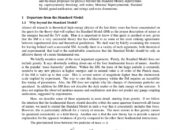Dark matter, an enigmatic substance constituting approximately 27% of the Universe’s mass-energy content, has long perplexed physicists and cosmologists alike. Its presence is inferred from gravitational interactions that cannot be attributed to visible matter. The quest to elucidate the nature of dark matter raises an intriguing hypothesis: does dark matter come in two flavors? This proposition invites exploration into the dichotomy of potential dark matter candidates and their implications on cosmological frameworks.
The journey into the realm of dark matter flavor begins with the Standard Model of particle physics, which effectively describes known particles but leaves a significant question unanswered. What comprises dark matter? Various theoretical frameworks have been proposed, each suggesting different potential candidates. A primary distinction can be established between weakly interacting massive particles (WIMPs) and lighter candidates such as axions. Both categories propose varying properties and interactions, thereby leading to the notion that dark matter might indeed come in two flavors.
The WIMP model is perhaps the most widely recognized candidate for dark matter. These hypothetical particles are predicted to possess mass on the order of a few hundred GeV/c² and interact via the weak nuclear force, which is exceedingly feeble at human scales. Consequently, WIMPs are capable of evading direct detection in laboratory settings, yet their gravitational influence is unmistakable in the cosmic structures we observe. The existence of WIMPs is supported by the theory of supersymmetry, which postulates the existence of partner particles that could account for dark matter.
Conversely, axions represent a distinct flavor of dark matter. Proposed in the 1970s to solve the strong CP problem in quantum chromodynamics, axions are theorized to be incredibly light particles, with masses on the order of micro-electronvolts. Their non-thermal production mechanisms and unique coupling to electromagnetic fields afford them distinctive cosmological signatures. This divergence in mass and interaction characteristics poses a tantalizing consideration: could the Universe be composed of both WIMPs and axions? Such a dual existence might not only clarify anomalies in galactic rotation curves but also provide insights into the formation of cosmic structures.
A pivotal piece of evidence supporting the notion of two flavors of dark matter arises from observations of galaxy cluster dynamics. Clusters, such as the Bullet Cluster, demonstrate behaviors that cannot be reconciled solely through the lens of traditional gravitational models. The dynamics observed suggest that dark matter has non-baryonic constituents, possibly indicating different flavors of dark matter interacting under various conditions. WIMPs, with their mass and interaction properties, can account for some observations, yet axions might elucidate phenomena involving cosmic microwave background radiation and large-scale structure formation.
The dual flavor hypothesis further embraces the concept of dark sector interactions, where dark matter candidates might interact with each other through unknown forces that remain undetectable by standard means. Such interactions could result in complex behaviors, akin to how baryonic matter exhibits various states and phases. Thus, exploring this hypothesis necessitates significant advancements in experimental techniques designed to probe both high-energy collisions and low-energy interactions within dark matter candidates.
Moreover, the interplay between flavor types may manifest dynamically throughout the Universe’s history. In the early cosmos, high-energy conditions might have favored WIMPs, while contemporary low-energy regimes might tilt towards the prevalence of axion-like particles. Such fluctuations raise further questions about the evolutionary implications of dark matter. If the Universe indeed comprises heterogeneous flavors of dark matter, how does this diversity affect galaxy formation, evolution, and the large-scale structure of spacetime?
In addition, the possibility of detecting these two flavors raises significant challenges in both theoretical and experimental physics domains. Current dark matter detection experiments predominantly target WIMP interactions through direct detection methods, which rely on detecting rare scattering events against normal matter. However, the axion detection realm remains a nascent field, where novel approaches such as axion haloscopes aim to capture signatures of these elusive particles. As both programs advance, the resolution of whether dark matter consists of a singular flavor or multiple flavors may substantially influence future cosmological models.
Beyond experimental pursuits, the theoretical underpinnings of dark matter flavors augment our understanding of fundamental interactions. They highlight the necessity of unifying gravitational, electromagnetic, and potentially new forces within a comprehensive framework. While candidates like WIMPs and axions present divergent properties, their coexistence might hint at a more elaborate dark sector, possibly bridging gaps in our understanding of both particle physics and cosmology.
The broader implications extend even further. If dark matter is indeed comprised of two flavors, it could entail cascade effects on gravitational waves and their connections to dark energy, suggesting a cohesive interplay between matter, energy, and the fabric of the Universe itself. This uncharted territory beckons researchers to scrutinize established paradigms and adopt a multidisciplinary approach to uncover the essences of both visible and invisible realms of reality.
In conclusion, the proposition that dark matter comes in two flavors invites profound contemplation and dialogue. While current understanding leans towards candidates like WIMPs and axions, empirical evidence remains necessary to validate this duality. Exploring these flavors can illuminate the mysteries of dark matter, enriching our comprehension of the Universe. As the scientific community advances its quest for knowledge, the implications of dark matter’s potential multiplicity underline the significance of collaborative inquiry, fostering an expansive view of the cosmos that continues to elude us.












